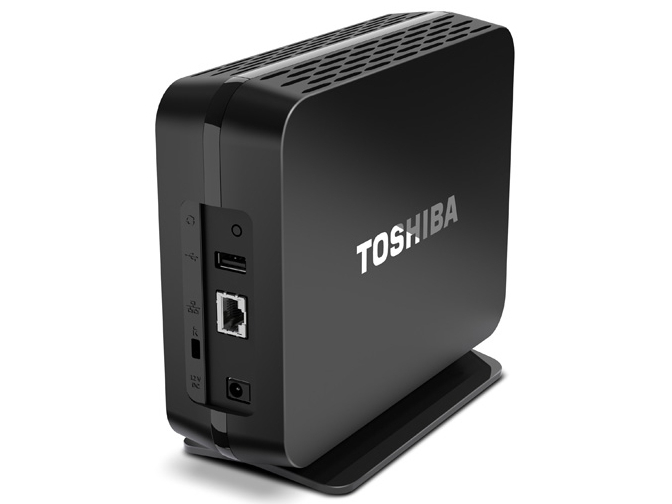Toshiba Canvio Home NAS a Good Way to Build Local Cloud
Now that the entire family is online thanks to smartphones, tablets, notebooks and so on, every home should have a central solution for storing music, pictures, video files, documents – you name it. The solution should be accessible from anywhere through easy-to-use software so that even impatient teens can deposit and go as they please.
Toshiba is now offering such solutions that, according to the company, address past complications of storing files. Called the Canvio Home Backup and Share, the device is a network attached storage (NAS) hub providing either 2 TB or 3 TB of storage, depending on your budget. The device is accompanied by easy-to-install and easy-to-use software so that anyone can set up the NAS on the local network.
"Set-up is a no-brainer for anyone with basic knowledge of computer hardware and software. Then, once it's up and running, you and your community of users will have no trouble logging in and finding the files and other content you want, thanks to a single application with a clear menu and intuitive interface," reads the product sheet.
Users can access the files from anywhere, whether it's in the home or away on a family trip. When at home, Toshiba's Canvio NAS allows users to stream video and music to DNLA-compliant devices, Windows PCs, Mac computers, iPhone and iPad mobile digital devices and Android-based smartphones and tablets.
Toshiba's Canvio Home provides only one hard drive bay, a Gigabit Ethernet interface, and a USB 2.0 port for adding even more files to share. For backing up files from Apple devices, Time Machine will be used. For Windows and Android-based devices, the included software will do image-based backups or incremental backups.
"It is so much more than just a box to drop your files in. This is safe, private storage that you can share," says Maciek Brzeski, vice president of product marketing and development, Branded Storage Products, Toshiba Digital Products Division.
Western Digital launched a similar product back in October 2013: the My Cloud family of personal cloud solutions. Like the Canvio Home product, WD's My Cloud also provides both local and remote access to files. Users can even transfer files from Dropbox and other public cloud accounts using WD's My Cloud mobile app.
Get Tom's Hardware's best news and in-depth reviews, straight to your inbox.
On the pricing front, WD is charging $149.99 USD for 2 TB, $179.99 USD for 3 TB and $249.99 USD for 4 TB. Toshiba is a bit pricier than WD, charging $199.99 USD for the 2 TB model and $259.99 USD for the 3 TB model.
For more information about the Canvio Home Backup & Share products, the 2 TB version is listed here, and the 3 TB version is listed here.

Kevin Parrish has over a decade of experience as a writer, editor, and product tester. His work focused on computer hardware, networking equipment, smartphones, tablets, gaming consoles, and other internet-connected devices. His work has appeared in Tom's Hardware, Tom's Guide, Maximum PC, Digital Trends, Android Authority, How-To Geek, Lifewire, and others.
